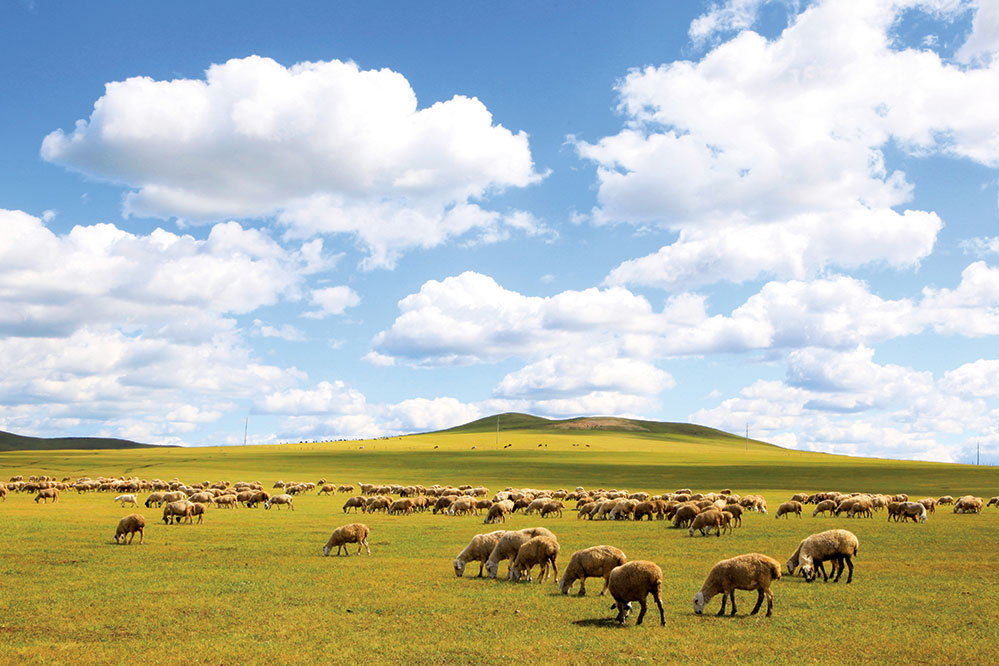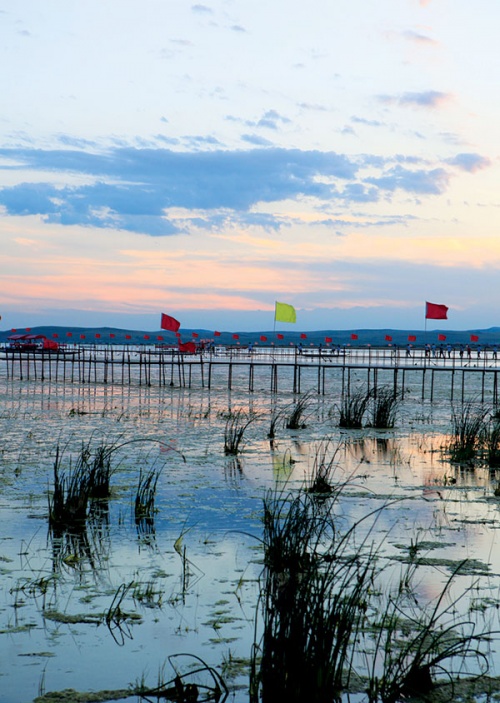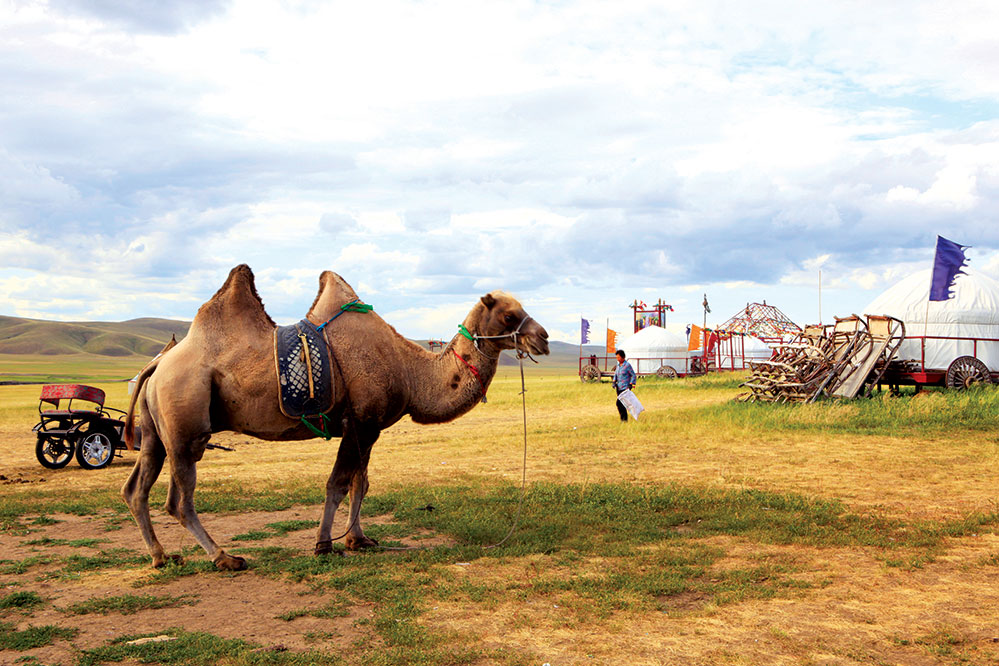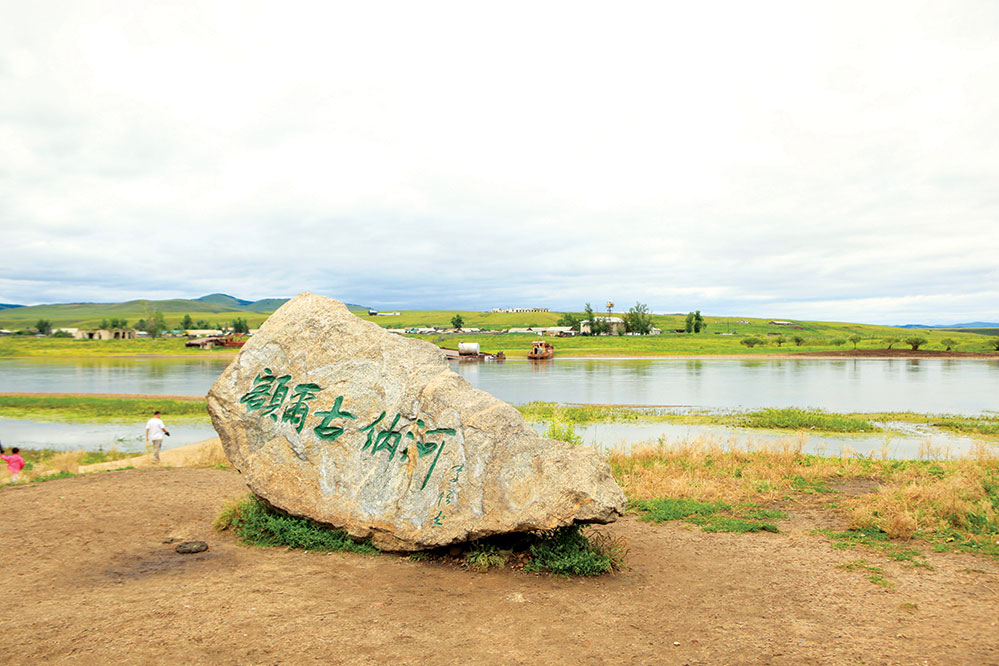
Hearing a commotion, I look up to see a young Mongol herdsman shooing away a tourist. “If the horse kicks you, I am not going to pay your medical expenses,” the herdsman shouts in accented Mandarin. The tourist had been warned several times to stay away from the herd, but he ignored the warnings for the sake of a photo opportunity.
The herdsman’s stern demeanour reminds me that I am in the land of the Mongols, whose forebears in the 13th century earned the epithet “Devil’s Horsemen” as they conquered Asia for Genghis Khan, the fierce warrior that ruled an empire stretching from the Pacific Ocean to the Caspian Sea. Mongols have a reputation for valuing horses above men. Some are said to learn to ride before they can walk.
I am in Inner Mongolia, an autonomous region of China. Over the international border, to the north, lie Mongolia proper and Russia. The winters here are cold and long, and blizzards frequent. Summer lasts just a few months and, while it is warm during the day, a jacket is necessary at night. I was lured to the Hulunbuir region of Inner Mongolia by images of wide blue skies dotted with fluffy clouds, vast undulating grasslands and horses grazing on them, watched over by nomadic herdsmen. The Hulunbuir grasslands have been called the most beautiful in China.

My journey brought me first to Manzhouli, where the Trans-Siberian Railway crosses the Sino-Russian border. The town is small enough to explore on foot. It feels more Russian than Chinese, with its European-style architecture in pastel shades; its restaurants serving borscht, black bread and baked salmon; and its shops selling Russian handicrafts and matryoshka dolls. Some of the townsfolk speak Russian effortlessly.
Many will tell you there is no lack of leisure and entertainment facilities befitting a frontier town. The dozens of bars, nightclubs and bathhouses make you forget that you are in China. Most are meant for Russian tourists.
Some of the bigger Chinese restaurants put on performances by dancers and acrobats.
For less louche diversions, the Russian Art Museum is just by Matryoshka Doll Square, the new Russian-style church sits on a hilltop, and the region’s largest lake, Hulun Lake, is just outside town.
During the peak months, July and August, most of Manzhouli’s hotels are full, so it is best to book in advance. In December, the town holds its Ice and Snow Festival and the China-Russia-Mongolia International Beauty Pageant. But be prepared for the weather to be frigid. The most luxurious hotel is the five-star Shangri-La Hotel, Manzhouli, in the centre of town. Many mid-range hotels are to be found around the city square.

I found a driver prepared to take me out into the vast surrounding plains in his car for 600 yuan a day. Outside Manzhouli, the roads are good and traffic scarce. On the plains, the adventure begins. For mile after mile, as far as the eye can see, the landscape is one of rolling grasslands dotted with windmills. The air is uncommonly fresh for China. Occasionally we come across Mongol herders of sheep and horses, and their yurts. We stop to drink yak butter tea or take photographs.
My journey takes me to Shiwei, a village about 300 kilometres from my ultimate destination, Hailar. Shiwei sits on the Eerguna River, which forms the Sino-Russian border. Visitors can explore the town on foot, go for horse rides or take a cruise along the river, all the while scrutinising the Russian neighbours on the other side of the river. Shiwei is home to one of the smallest ethnic minorities in China, the Russian- Chinese. They are either of Russian descent or the progeny of Han Chinese and Russians.
About 2,000 Russian-Chinese live in the village, in traditional houses built of logs called mukeleng. Visitors to Shiwei can stay overnight in a mukeleng or in a Russian-style cottage, and eat Russian food. Other accommodation ranges from an upmarket hotel, Lian Na Zhi Jia, to cheaper lodgings such as Yun Ping Jiu Dian. Other villages in the area worth exploring include Enhe and Linjiang. Halfway between Shiwei and Hailar, the birch forests are worth a visit.

The most convenient way to see the vast grasslands and experience the nomadic way of life of the Mongols is to stay in one of the many yurt camps to be found just outside Hailar.
The biggest camp is called the Golden Horde, or Jin Zhang Han. The bigger camps offer horse rides and camel rides, and nightly barbecues with traditional singing and dancing for entertainment. The smaller camps are quieter.
In both sorts, right outside your replica of a yurt are the wide-open grasslands, yours to roam as you please. Wake at 3.30am to catch the spectacular play of light on the plains as the sun rises. A no-frills, pseudo-yurt with six beds costs about 800 yuan a night. Less basic accommodation has much less basic prices. Most of the camps have their own restaurants. Think about staying for a night, even if just for the experience, but know that the area can be a tourist trap and the service is poor. If you want to escape the tourist crowd, arranging to stay in a Mongol household in the grasslands requires good negotiating skills and command of Mandarin or Mongolian.

Hailar is like any significant industrial city in the mainland, being populated mainly by Han Chinese and having few attractions other than the airport and its flights out. Efforts have been made to doll up the city by stringing coloured lights along the streets, but most people stay indoors except during summer.
The hotels and shopping malls are near the main square. A recently added attraction is a row of replica Qing dynasty shophouses. Strolling around the area, you may be lucky enough to come across a night market that caters to residents.
Regular flights from most of the big cities in China serve Manzhouli or Hailar. The best time to visit is in July or August, when the grasslands are at their finest. The most important festival in the Mongolian calendar is Naadam, celebrated in early July.

Naadam lasts for more than a week. It marks the end of the harvest season with games that show off the prowess of the Mongols in wrestling, archery and horseracing. Each day usually ends with a huge bonfire party, at which young Mongols sing and dance all evening.
Hulunbuir has a second such festival in winter. Even though the temperature can drop as low as minus 20 degrees Centigrade, the people of the region celebrate with camel races, sled races and archery contests, which take place against the backdrop of the snow-covered plains.






